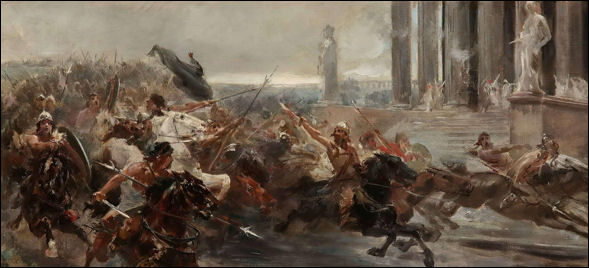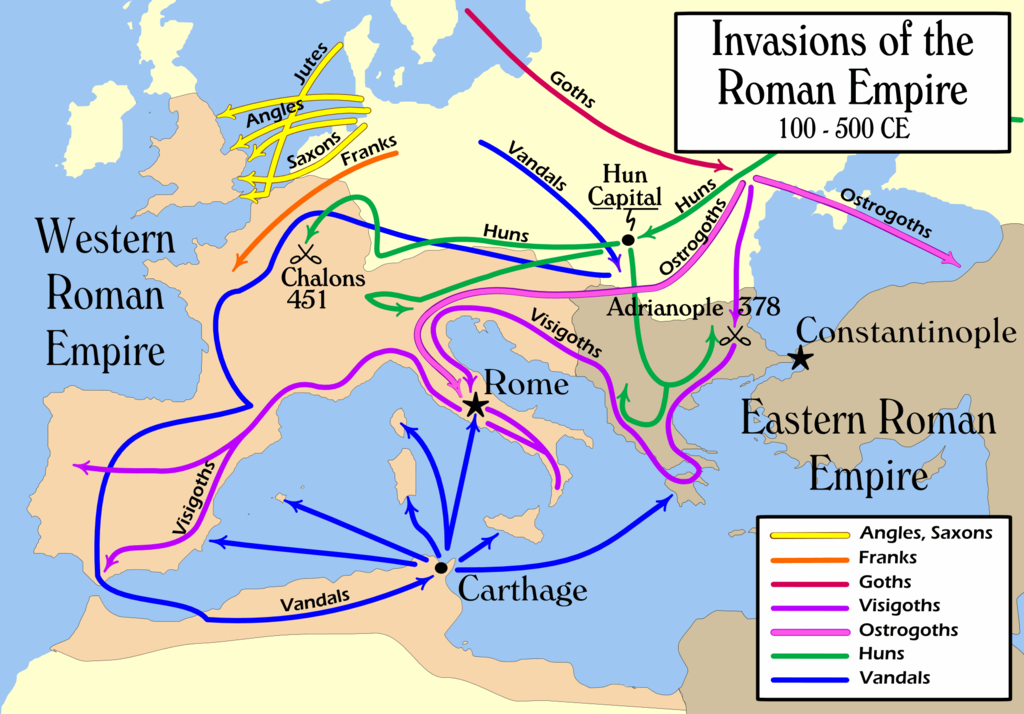
With Secretary of State John Kerry’s announcement on March 17th that ISIL is guilty of committing genocide in the Middle East, the Islamic State was officially established as a morally-reprehensible entity in the eyes of the international community. As Brittany Gamlen noted in her article “Is the Declaration of Genocide Enough?” this declaration does not officially elicit any particular action from the United States or its allies but, at a base level, it symbolizes the United States’ abhorrence of the violent acts of the Islamic State.
ISIL’s bombing of European nations, organized sex slavery, and vicious tactics in warfare have placed the group on a worldwide stage upon which most nations across the world have expressed their condemnation of the group’s horrible acts. The current international disdain for ISIL raises the question, “Has the world ever seen such a violent and internationally-hated entity? Unfortunately, our current situation shares a number of similarities with Europe and the Middle East’s conflict with the Hunnic Empire, which began as early as 372 CE.
A notable difference between ISIL and the Huns is that while ISIL is interested in capturing settlements and forming a new caliphate, the Huns were a nomadic people who were interested in sacking and razing settlements, not capturing them.
ISIL and the Huns do share, however, almost global enmity. In 372 CE, the Hunnic hordes descended from their Northern Eurasian steppes and began raiding the territories of various Gothic factions bordering the Black Sea. By 376 CE, the Huns had subjugated the Alans and the Greuthungi, two previously prominent factions, forcing coalitions of Ostrogoths and Visogoths to abandon their settlements and flee toward the protection of the Roman Empire to the West.

Notably, however, neither the Western or Eastern Roman Empires would be able to withstand Hunnic attacks. The Huns began their first major invasion of the Eastern Roman Empire in 395 CE, raiding and pillaging around modern Bulgaria and Greece for three years before falling back to the steppes to count their plunder.
Hunnic attacks would not stop, however. In 435 CE, under the leadership of the infamous Attila, the Huns forced the Eastern Roman Empire to sign the Treaty of Magnus, which gave the Huns trade rights and required an annual payment of tribute from the Eastern Roman Empire. This agreement would be broken quickly, as hostilities resumed in 440 CE with the Huns sacking more than ten Eastern Roman settlements.
What is truly notable about the Huns, however, is that they would regularly raze their enemies’ settlements. When a settlement is “razed,” its population is either completely decimated or enslaved, its buildings are burned or knocked to the ground, and its fields are torn up and filled with salt. Sophomores taking Natural World II this semester were recently taught that the Western Roman Empire fell because of its non-sustainable agricultural practices, but this may not be the case. We do not know a lot about Roman farming practices, but we know that their fields were destroyed by the Huns. As such, the Romans did not have the food to feed their soldiers and, thus, did not have the soldiers to maintain their empire.
But why raze a settlement? We can look to the acts of ISIL for an answer. ISIL has systematically looted and destroyed modern cities and ancient ruins alike, notably the ancient ruins near the settlement of Palmyra in Syria. ISIL has claimed that these attacks are meant to destroy the idols of other Muslim sects (although there is no indication of idol worship in many affected areas) and landmarks of Western expansion into the Middle East. There is also a great deal of money to be made through the sale of the ancient artifacts that ISIL has stolen.
Therefore, both modern ISIL and the ancient Huns share the same despicable and barbaric practices. The Hunnic menace to the world, rampaging through most of Europe as well as the Middle East, lived for almost an entire century. ISIL cannot have the same lifespan. The Huns succeeded because although the entire world was afraid, they did not unite against the Huns. When one Gothic faction fell, its neighbor to the West would wait with fingers crossed, hoping to not be the next anthill sitting in the path of the Huns. For this modern Hun to be destroyed, the civilized nations of Europe, Africa, the Americas, and the Middle East must unite against our common enemy.
While we share many differences, a united global coalition would free the world from a shared terror.
Lee Shaw is a sophomore BIC student majoring in professional writing.
Further Reading:
http://news.nationalgeographic.com/2015/09/150901-isis-destruction-looting-ancient-sites-iraq-syria-archaeology/
http://news.nationalgeographic.com/2015/08/150826-syria-palmyra-islamic-state-isis-archaeology-history/
http://www.newworldencyclopedia.org/entry/Hunnic_Empire
http://nymag.com/daily/intelligencer/2014/11/isis-now-has-military-allies-in-11-countries.html
http://www.nytimes.com/2016/04/05/world/middleeast/palmyra-syria-isis.htm